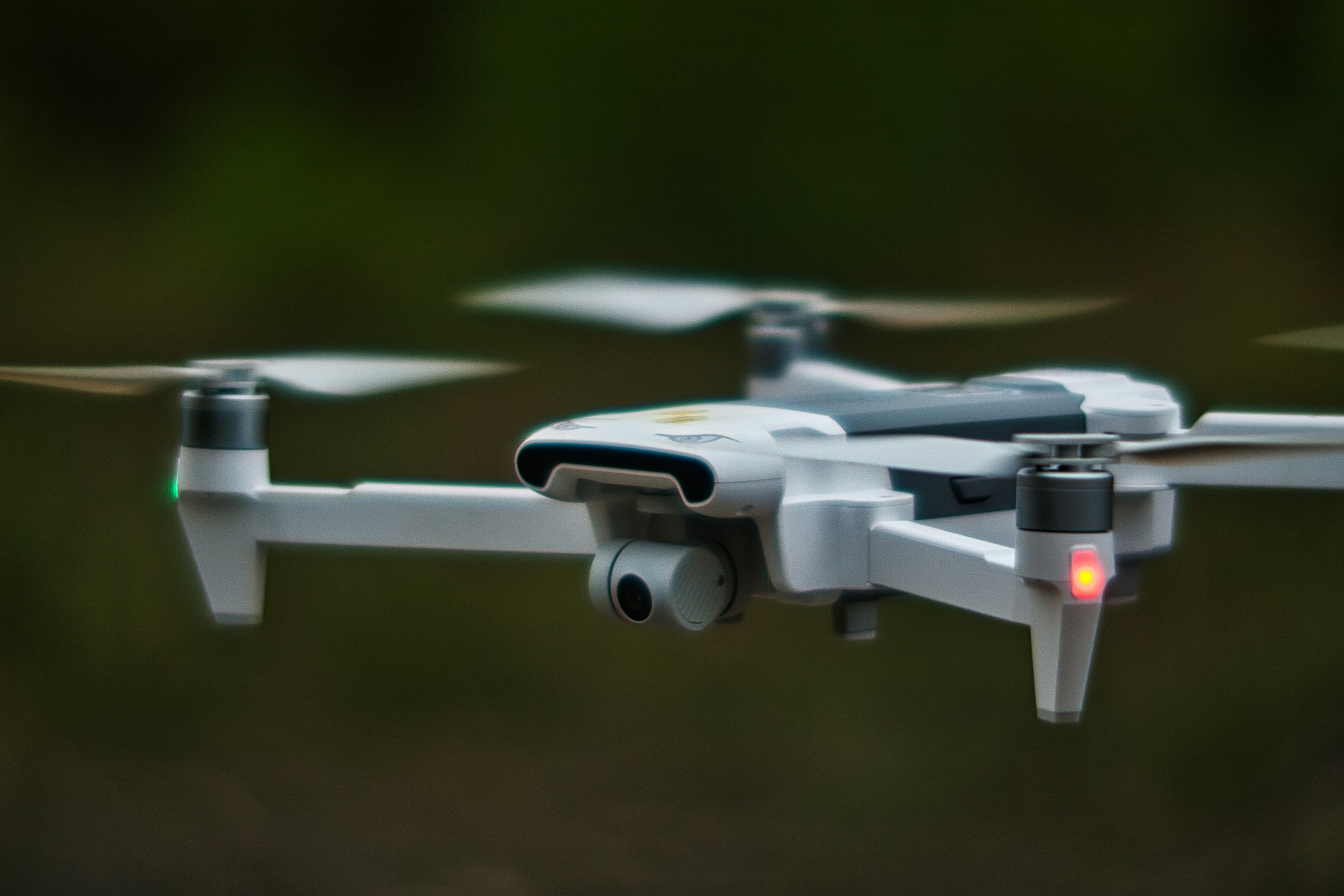
Building the Ultimate UAV Skill Set: Technical and Soft Skills Employers Want in 2025
Unmanned Aerial Vehicles (UAVs)—often called drones—are transforming industries across the UK, from aerial surveying and agriculture to defence, logistics, and filmmaking. As UAV technologies develop at a rapid pace, employers need more than simple drone pilots: they’re looking for professionals with a well-rounded skill set that spans both the technical and soft realms. Whether your goal is to build or pilot drones, analyse the data they capture, or oversee UAV projects from start to finish, a solid grasp of these key capabilities will set you apart in a competitive job market.
This article, prepared for www.uavjobs.co.uk, explores what it takes to thrive in the UAV field. We’ll examine the technical skills that enable you to design, operate, and maintain drones, as well as the soft skills that allow you to communicate effectively, work smoothly on cross-functional teams, and adapt to ever-shifting industry demands. By the end, you’ll have a clearer roadmap for becoming an indispensable UAV professional—one who can navigate the skies and the boardroom with confidence.
1. Why UAV Skills Matter in Today’s Marketplace
1.1 Growing Market Opportunities in the UK
The UAV sector in the UK has grown exponentially, spurred by factors such as:
Commercial Applications: UAVs assist with tasks like precision agriculture, building inspections, and emergency services, offering greater efficiency and cost savings.
Media and Entertainment: Filmmakers and content creators rely on drones for stunning aerial shots, live event coverage, and immersive experiences.
Defence and Security: Military agencies and private security firms use UAVs for surveillance, reconnaissance, and threat mitigation.
Logistics and Delivery: With companies experimenting in drone-based parcel or medical supply deliveries, there’s a surge in demand for UAV pilots and logistics planners.
As adoption increases, so does the need for diverse roles—engineers, data analysts, project managers, operation coordinators, and software specialists. Each role may involve different responsibilities, but all benefit from a comprehensive UAV skill set.
1.2 The Need for Multifaceted Professionals
Operating UAVs or working on UAV-related projects demands more than just technical savvy. The best drone specialists can communicate effectively, handle the complexities of regulation, lead teams, and troubleshoot issues on the fly. Employers are looking for professionals capable of bridging technical expertise with soft skills—those who can adapt to changing technology, present project updates to stakeholders, and collaborate with cross-functional departments such as marketing, operations, finance, and legal.
2. Essential Technical Skills for UAV Professionals
2.1 Aerodynamics and Flight Mechanics
UAVs, whether multi-rotor drones or fixed-wing aircraft, rely on core aerodynamic principles:
Lift, Thrust, Drag, and Weight: Understanding how these forces interplay underpins stable flight.
Control Surfaces: For fixed-wing UAVs, learning how ailerons, elevators, and rudders affect flight control is key.
Propeller Dynamics: Multi-rotor drones depend on correct propeller pitch and rotation speeds for stability.
Even if you specialise in data analysis or hardware integration rather than flying, a basic understanding of how UAVs stay airborne helps you communicate more effectively with your team and make informed design or operational decisions.
2.2 Electronics, Hardware, and Sensors
Drones integrate various hardware components, including motors, controllers, GPS modules, cameras, and sensors:
Motor and ESC (Electronic Speed Controller): Converting electric power to rotational force and controlling speed.
Flight Control Boards: Devices like Pixhawk or DJI controllers that gather sensor data to maintain flight stability and responsiveness.
Navigation Sensors: GPS, barometers, and inertial measurement units (IMUs) for positioning and altitude hold.
Payload and Camera Systems: Thermal cameras, LiDAR, or multispectral sensors for surveying, surveillance, or media capture.
Professionals who can assemble, maintain, and troubleshoot these components—whether it’s an off-the-shelf drone or a custom build—are highly valued.
2.3 UAV Software and Programming
Software plays a pivotal role in UAV operations, from firmware controlling flight to data-processing applications:
Programming Languages: Python and C++ are common for UAV firmware and ground control station development.
Flight Control Firmware: Open-source platforms like ArduPilot or PX4 allow customisation and tuning of flight parameters.
Autonomous Flight Software: Setting up waypoints, geofencing, and mission parameters using tools like Mission Planner or QGroundControl.
Data Analysis Tools: Python libraries (NumPy, Pandas) and GIS software (QGIS, ArcGIS) enable extraction and interpretation of aerial imaging data.
By mastering these frameworks and coding practises, you’ll be able to tailor UAV functions to specific mission needs, automate processes, and harness data insights efficiently.
2.4 Regulations and Airspace Knowledge
In the UK, Civil Aviation Authority (CAA) regulations govern UAV usage. Keeping track of evolving rules is paramount for legal, responsible operation:
Drone Registration and Licensing: Understanding who needs a Flyer ID or Operator ID, and for which drone classifications.
Operational Authorisations: Permissions to fly beyond visual line of sight (BVLOS) or above certain altitudes, often requiring risk assessments.
No-Fly Zones: Complying with restricted areas around airports, urban environments, or sensitive locations.
Insurance and Liability: Risk coverage for commercial operations, including public liability insurance.
Staying compliant mitigates the risk of fines, reputational harm, or project delays, which is especially critical for commercial operations.
2.5 Mission Planning and Data Acquisition
Beyond the act of piloting, mission planning is a core skill set in UAV jobs:
Route Design: Plotting flight paths optimised for safety, efficiency, and data capture quality.
Environmental Considerations: Accounting for wind, precipitation, temperature, or line-of-sight challenges.
Payload Integration: Matching sensor requirements (e.g., multispectral camera or LiDAR) with flight plans to gather high-quality data.
Time and Resource Management: Scheduling flight times, battery swaps, and other resources for smooth field operations.
Attention to detail here can make the difference between a successful data-gathering effort and a wasted flight session.
2.6 Big Data Processing and Analysis
Drones can capture vast amounts of information—from high-resolution images to sensor readings. Employers want data-savvy professionals:
Post-Processing: Software such as Pix4D or DroneDeploy can transform raw imagery into orthomosaics, 3D models, or digital surface maps.
Machine Learning: Automated feature detection, classification, and predictive analytics using AI frameworks (TensorFlow, PyTorch).
Cloud Platforms: Data storage, processing pipelines, and collaborative workflows (AWS, Azure, GCP).
Visualisation: Communicating insights via dashboards, geospatial maps, or interactive 3D models.
A robust ability to interpret and present data adds tangible value to clients or stakeholders, turning raw footage into actionable intelligence.
2.7 Advanced Piloting Skills
For more operational roles, mastery of drone piloting—beyond the basics—is a game-changer:
Manual Flight Modes: Proficiency in flying without GPS assistance or stabilisation.
First-Person View (FPV): Controlling UAVs via onboard camera streams for close-proximity filming or racing.
Night-Time or Indoor Operations: Navigating in low-light conditions or confined environments.
Emergency Procedures: Quick decision-making when facing battery issues, communications breakdown, or sudden weather changes.
Demonstrating advanced piloting competence not only enhances safety but also shows employers you can handle challenging or high-stakes missions with confidence.
3. The Soft Skills That Set UAV Professionals Apart
3.1 Communication and Presentation
Technical know-how is essential, but it must be accompanied by clear communication:
Client Consultations: Explaining UAV capabilities, limitations, and regulatory aspects to potential customers.
Team Briefings: Sharing flight plans or data analysis outcomes with co-workers, some of whom may not be drone experts.
Reporting: Crafting thorough, jargon-free reports for higher management or government agencies.
Selling Ideas: Convincing stakeholders to adopt UAV initiatives or invest in new drone technologies.
Communication prowess ensures smoother collaboration, reduces misunderstandings, and often positions you as a leader or go-to expert in your organisation.
3.2 Collaboration and Teamwork
UAV operations frequently intersect with diverse teams—project managers, GIS specialists, mechanical engineers, software developers, and clients:
Cross-Disciplinary Work: Understanding each role’s objectives and constraints fosters synergy, preventing delays or conflicts.
Conflict Resolution: Ability to mediate when team goals clash or when resource allocations become a bottleneck.
Respect and Inclusivity: Welcoming input from all levels, valuing diverse perspectives that can spark innovation.
Virtual Collaboration: Remote work, online project management tools, and virtual communication channels increasingly define modern UAV projects, calling for adaptability in digital teamwork settings.
Employers appreciate individuals who can align a group under shared aims, transforming them into an effective unit that delivers on project deadlines and customer needs.
3.3 Adaptability and Problem-Solving
UAV missions encounter everything from sudden weather shifts to last-minute regulatory changes. Being adaptable is vital:
On-the-Fly Adjustments: Re-routing around unexpected restricted zones or altering camera angles due to obstructions.
Crisis Management: Handling technical failures or system malfunctions mid-flight, mitigating potential harm.
Learning Mindset: Keeping pace with drone technology evolution, new sensors, or updated regulations.
Iterative Improvements: Integrating lessons learned from each project back into processes, hardware, or software choices.
Those who thrive under uncertain conditions and approach problems proactively stand out in a field defined by rapid innovation.
3.4 Creativity and Innovation
While drones are increasingly standard tools, creativity in their application remains a differentiator. Innovative UAV professionals:
Refine Methods: Devise more efficient ways to capture data or develop new payload configurations.
Generate New Markets: Identify niche areas—e.g., offshore wind farm inspections or wildlife conservation tracking—where UAVs can add value.
Design Custom Solutions: Implement custom-coded algorithms or hardware mods for unique client requests.
Seek Alternative Approaches: Use VR-based simulations or advanced analytics to maximise data usage and improve workflows.
A forward-thinking mindset often leads to cost savings, better data quality, and unique selling propositions that impress employers and customers alike.
3.5 Leadership and Project Management
The UAV sector’s growth creates management opportunities for individuals who can coordinate teams, budgets, and timelines:
Setting Goals: Defining project milestones—from prototype development to final data delivery.
Resource Allocation: Ensuring the right mix of drones, personnel, and software for each task.
Budgeting: Balancing equipment upgrades and operational costs.
Mentoring: Guiding junior staff, imparting best practices, and encouraging professional development.
Even if you’re not in a senior position, showcasing leadership potential—by running flight tests autonomously, mentoring interns, or leading small R&D initiatives—signals career readiness and strategic acumen.
4. Why Both Skill Sets are Equally Important
4.1 Bridging the Gap Between Tech and Stakeholders
UAV projects often involve non-technical stakeholders—clients, investors, regulators—who may not grasp complex drone specifications or mission planning intricacies. Professionals with robust technical understanding and polished soft skills can:
Translate technical jargon into actionable insights for stakeholders.
Gain trust from decision-makers, ensuring smooth project approvals and funding.
Manage customer expectations, reducing potential conflicts or misunderstandings.
4.2 Ensuring Regulatory Compliance and Safety
Safe, compliant UAV operation demands technical precision in piloting and hardware setup, combined with soft skill diplomacy to collaborate with authorities, fill out paperwork, or negotiate flight permissions. Balancing both reduces risk of:
Fines or legal disputes due to non-compliant flights.
Accidents stemming from poor communication or misaligned expectations.
Damaged reputations and lost business opportunities.
4.3 Driving Innovation in a Competitive Market
With UAV technology evolving so quickly, companies competing in this space need professionals who can innovate while working harmoniously with their teams and customers. This emphasis on innovation is best fuelled by combining deep technical insights with open-mindedness, team collaboration, and creative thinking—all hallmarks of strong soft skills.
5. Practical Tips for Building Your UAV Skill Set
5.1 Formal Education vs. Self-Learning
Many roles in the UAV industry don’t necessarily demand a traditional aerospace or engineering degree. However, degrees in aeronautical engineering, computer science, or electrical engineering can provide a strong foundation. For those looking to pivot from other sectors or gain more specialised knowledge, consider:
Diploma or Certificate Programmes: Short courses covering drone piloting, aerial mapping, or UAV regulations.
Online Platforms: Websites like Coursera, edX, or Udemy offering modules in robotics, AI, and drone software.
Apprenticeships: Some larger UAV firms or drone service providers may offer structured apprenticeships mixing hands-on training with classroom sessions.
5.2 Hands-On Experience and Projects
Nothing beats real-world practice:
Join a Local Drone Club: Fly socially, attend events, and learn from more experienced pilots.
Personal Projects: Build or customise a drone, experiment with sensor integration, and document your progress online (e.g., GitHub or a personal blog).
Volunteering: Offer aerial photography or surveying services to local charities or community groups; it’s excellent practice and builds your portfolio.
Hackathons or Competitions: Competitions focusing on UAV innovation can sharpen both your technical and soft skills, requiring quick problem-solving in high-pressure environments.
5.3 Certifications and Licences
Depending on your career goals, official certifications can boost your credibility:
UK Drone Regulations: A Flyer ID, Operator ID, or additional A2 Certificate of Competency (A2 CofC) for commercial operations in the Open category.
Specific Industry Credentials: For instance, if you’re focusing on inspection services, having certifications relevant to building or industrial inspections can add value.
Specialist Safety Training: Course completion in safety best practices or advanced BVLOS (Beyond Visual Line of Sight) endorsements for extended operational permissions.
Employers appreciate proactive compliance, as it shows you take operational standards seriously.
5.4 Network and Find Mentors
The UAV community, although rapidly expanding, remains close-knit, which makes networking crucial:
Local Meetups or Conferences: Events like Commercial UAV Expo Europe or the Farnborough International Airshow can provide valuable contacts and learning.
LinkedIn Groups: Join industry-specific forums to share insights, ask questions, and learn from professionals worldwide.
Mentorship: Seek out experienced UAV pilots or engineers who can guide you on career steps, technical challenges, or advanced flight techniques.
Making meaningful connections often leads to collaborative projects, referrals, and up-to-date knowledge of industry trends.
5.5 Showcase Your Accomplishments
Standing out in the job market means demonstrating your skills through tangible outputs:
Portfolio: Display UAV-related projects—videos, orthomosaic maps, or 3D models you’ve created.
GitHub Repositories: If you code flight controllers or data-analysis scripts, publish them with clear documentation.
Case Studies: Write short articles or blog posts outlining challenges faced in a drone operation and how you overcame them, emphasising both technical and soft skill utilisation.
Keep your CV, LinkedIn, and personal website updated. A dynamic portfolio offers employers clear evidence of what you bring to the table.
6. Career Paths in the UAV Sector
6.1 UAV Pilot and Flight Operations
A UAV pilot focuses on flight execution—manually operating drones or supervising automated missions. Common roles include:
Aerial Photographer/Videographer: Serving media, events, or cinematography.
Inspection Specialist: Conducting surveys of infrastructure, buildings, or agricultural fields.
Delivery Pilot: Engaging in logistics or medical supply transport (emerging field).
Training Instructor: Teaching new operators flight skills and regulatory compliance.
6.2 UAV Engineer or Technician
For those who love hardware and software design:
Mechanical/Electrical Engineer: Designing drone frames, propulsion systems, or sensor mounts.
Firmware Developer: Coding flight control algorithms, implementing computer vision, or building secure communication protocols.
Maintenance Technician: Conducting repairs, firmware updates, and diagnostics on commercial drone fleets.
6.3 Data Analyst or GIS Specialist
With UAVs generating terabytes of data, data-focused professionals are indispensable:
Remote Sensing Expert: Leveraging multispectral or thermal imaging for environmental studies, farming, or resource exploration.
Machine Learning Researcher: Building AI models that classify images, detect anomalies, or forecast patterns.
GIS Specialist: Integrating drone-derived data into mapping software to produce geospatial insights or interactive dashboards.
6.4 Project Manager or Consultant
As UAV projects grow more complex, there’s a need for organisational oversight:
Project Coordinator: Aligning flight schedules, safety protocols, and team roles.
Business Development/Consulting: Advising clients on UAV strategy, compliance, or cost-benefit analysis for adopting drone solutions.
Policy Liaison: Working with local or national authorities to ensure project compliance and secure flight permissions.
6.5 Entrepreneur or Start-up Founder
Some professionals choose to found drone service companies, offering specialised flight operations, data analytics, or software platforms. This path requires an integrated blend of technical prowess, business acumen, marketing, and leadership to stand out in a competitive industry.
7. The Future of UAVs and How to Stay Ahead
7.1 Emerging Technologies
UAVs won’t remain static. New areas are on the rise:
Drone Swarms: Coordinated groups of drones that can collaborate for tasks like search and rescue or large-scale surveying.
Autonomous Systems: AI-driven flight without human intervention, using advanced sensors and on-board machine learning.
Cargo and Passenger Drones: Larger UAVs for freight transport or even urban air mobility (air taxis), spurring complex airspace integration.
Quantum-Resistant Communications: Protecting drone data links from future quantum-based cyberattacks.
Professionals who track these developments and gain early experience often become trailblazers in pioneering new UAV applications.
7.2 Ethics and Sustainability
As drones proliferate, ethical and environmental considerations grow:
Privacy Concerns: Balancing business needs for aerial data with respect for personal privacy.
Noise Pollution: Minimising disturbance, especially in urban or protected natural areas.
Sustainable Materials: Using lightweight, recyclable drone components, or investing in hybrid/solar-powered drones.
Regulatory Input: Helping shape fair and informed drone policies through industry associations or public consultation.
Understanding these issues helps professionals align projects with broader societal values and enhances public trust in UAV technology.
7.3 Lifelong Learning Mindset
With new drone models, firmware updates, sensor advancements, and regulatory amendments emerging continuously, a commitment to ongoing education is crucial. Attending industry events, taking refresher courses, reading technical journals, or joining research forums keeps you informed and relevant in a fast-moving field.
Conclusion: Building Your UAV Career in the UK
Acquiring the ultimate UAV skill set means balancing technical mastery—flight mechanics, electronics, programming, data analysis—with soft skills—communication, collaboration, adaptability, leadership. Whether you dream of piloting drones for film productions, designing cutting-edge UAV hardware, or managing large-scale data analytics from aerial imagery, employers in the UK want multifaceted professionals who can solve problems holistically.
Why does this dual skill set work? In a sector defined by rapid innovation, tight regulations, and diverse stakeholder needs, drone professionals need to be both technically proficient and adept at bridging gaps between teams, authorities, and clients. By honing each aspect through formal training, hands-on practice, networking, and consistent self-improvement, you’ll stand out as a UAV specialist ready to lead projects that truly make an impact.
As the UK continues to invest in UAV technologies, fresh and exciting career avenues will keep emerging. Whether you’re a recent graduate or a seasoned industry veteran wanting to add drone expertise to your portfolio, www.uavjobs.co.uk is your gateway to discovering the latest roles. With the right combination of skills, you’ll be well-placed to shape the future of aerial innovation—ascending new heights in an industry that’s only set to soar.


